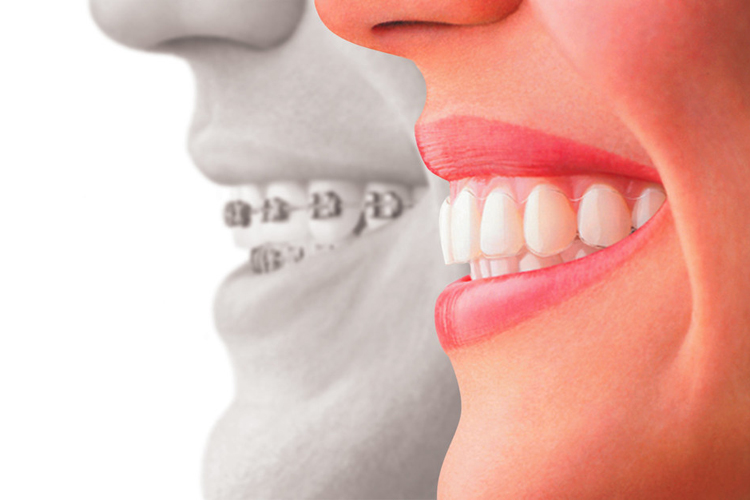Today, orthodontic patients enjoy more freedom than ever when it comes to tooth-straightening treatments. Kids and adults alike are no longer bound to the clunky, attention-grabbing braces of yesteryear. In this guide, we’ll look at two of the most popular tooth-straightening methods — Invisalign vs. braces — so that you can determine which product is right for you.
Whether you’re looking to straighten your teeth or those of your child, there’s a lot that goes into making the decision of which product to get. Against this backdrop, this guide will examine the selling points of both traditional braces and Invisalign and will review other factors such as cost to help you make your decision.
Deciding which choice to go with can be difficult, but if you need a dentist in Los Gatos to help you go through personalized options for you, click here. If you are looking for a cosmetic dentist in Sunnyvale that offers both of these options, click here
Keep reading to find out more about your options!
Overview
Let’s start by performing a brief overview of the two products:
Braces
Whether clear or metallic in nature, braces are fashioned from colored metal or resin and adhere directly to the teeth. The material works day and night to realign teeth into their optimal position. Today, braces can be bought in both standard metal and clear varieties.
Invisalign
Invisalign offers consumers a more hands-on way of fixing their own teeth. The product is generated by a computer, which maps out the dimensions of the mouth and crafts clear, removable molds that are designed to bring the teeth into their rightful positions. The product gets its name from its near-invisible nature and its ability to draw teeth closer together for a more aesthetically-pleasing smile.
Braces: Pros
With this being said, let’s take an in-depth look at the pros of wearing braces:
Durable
Fashioned from strong metal, traditional braces, no matter the color, are great long-term options for their incredible durability. Patients with braces are able to brush their teeth, eat most foods (though super hard or sticky foods are to be avoided), and can generally function normally—all while the strong metal slowly pulls their teeth into a more natural alignment.
Don’t Affect Speech
Another distinct advantage to wearing braces is its ability to get the job done without affecting speech. For children, especially, this proves a popular selling point: at the core of the issue, it’s critical that patients are able to straighten their teeth without hindering their speech development. Working adults will also appreciate the ability to communicate naturally in the workplace (and in their personal lives).
Customizable
Contrary to popular knowledge, today’s braces are widely customizable. Gone are the days of clunky gray wires and metal smiles. Today, braces are thin, sleek, and come in the color of your choice. Clear braces are an increasingly popular item for children who want to maintain the grace of their smile while improving the quality of their bite. Braces also come in other colors, such as green, for a more artsy and colorful effect.
Braces: Cons
With all this being said, however, there are some downsides to braces that you’ll want to know about. Let’s take a look:
Limiting
Forget about the candy, the peanut butter, and the hard foods: braces all but dictate a diet based on softer foods—especially in the beginning. Anything too hard could damage the wires and spokes of your braces, while chewy or gelatinous foods will get stuck in the brackets and cause you all sorts of trouble.
High-Maintenance
There’s no way around it: braces are a high-maintenance option that requires frequent dental checkups to make sure the teeth in question are moving in the right direction. Without these checkups, the quality of work done by the braces could be severely diminished.
Discomfort
Most patients report some type of discomfort with braces—especially in the beginning. That’s because the device literally pulls your teeth and jaw into a more proper alignment. While the level of discomfort will decrease with prolonged wear, you’ll want to keep in mind the initial acclimation period so that you know what you (or your child) is getting into.
Price
Braces are covered by a majority of dental insurance plans and typically range from $2,000-$6,000, depending on the severity of tooth misalignment.
Invisalign: Pros
How does Invisalign stack up to traditional braces? Let’s start our investigation by examining some of the major pros to the increasingly-popular product:
Removable
Once braces are on, they can only be removed by a trained orthodontist. Invisalign, on the other hand, can be removed at any time by the wearer for issues of comfort and convenience. That’s because Invisalign works through translucent trays that can be inserted or removed at will to help mold a more perfect smile.
Not Painful
Looking for an option that won’t keep you up at night? Invisalign customers marvel at the level of comfort Invisalign offers and praise the product’s ability to align teeth without the pain generally associated with braces. As for the dentists, Invisalign is recommended by many credible dentists because of the low levels of discomfort.
Clear Aesthetics
The number one reason behind Invisalign purchases, however, is the aesthetic advantage it offers. Indeed, it can be hard to notice Invisalign, even when looking closely. This makes the product a popular option for celebrities and other high-profile individuals looking to mold that perfect smile. If having strips of metal built onto your teeth makes you uncomfortable, Invisalign offers a nondescript way of straightening your teeth.
Invisalign: Cons
Still, Invisalign comes with its own set of cons that you’ll want to examine before buying. Specifically, the product:
Could Change Speech
Because Invisalign works by requiring consumers to place plastic molds over their teeth, it makes it harder for some customers to maintain natural speech. Lisps and other issues are common with Invisalign—at least at first—and learning how to talk around the molds could take some time.
Requires More Personal Responsibility
Even more important, Invisalign requires a great deal of personal responsibility. The product’s removable nature facilitates a lack of wear in some patients, which reduces the quality of the straightening being performed. For children, especially, Invisalign proves problematic because it can so easily be removed and even discarded.
Pricier
On top of all this, Invisalign remains more expensive than traditional braces. Part of this is simply the mechanics of the device. From computer mapping to mold-making, the Invisalign process is specialized and custom-done to fit individual customers. The result is a price increase that may turn off more budget-oriented consumers.
Price
So just how much can one expect to pay for Invisalign? Like braces, it will depend on the severity of tooth misalignment at the beginning of treatment, which will affect the number of molds needed during the tooth-straightening process. Still, average prices for Invisalign range from $3,500–$8,000, making the product more expensive than braces at both extremes.
Fortunately, Invisalign is covered by most dental insurance plans, making it a safe option for those individuals who are willing to shell out a bit of extra cash.
The Bottom Line
Both traditional braces and Invisalign remain popular tooth-straightening methods, with each having distinct advantages over the other. If you’re looking to get your teeth (or your child’s teeth) straightened in the near future, make sure to use this guide to find out which product is right for you. As you can see, there are a number of reasons to choose either product, though braces still remain the go-to option for children and young adults. For those looking for a more comfortable way to get their teeth fixed, however, Invisalign proves a quality (albeit pricey) alternative. Ultimately, the choice between braces and Invisalign boils down to budget, aesthetics, necessity, and personal responsibility.
Still on the fence? Reference the information above to make your purchase with confidence and know-how!




